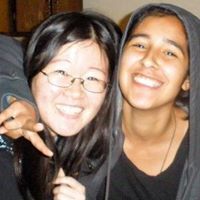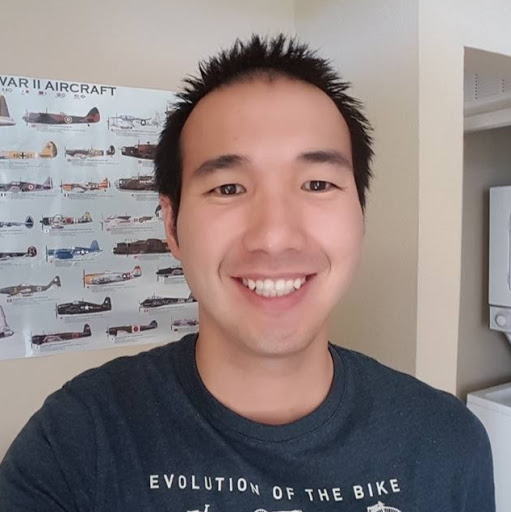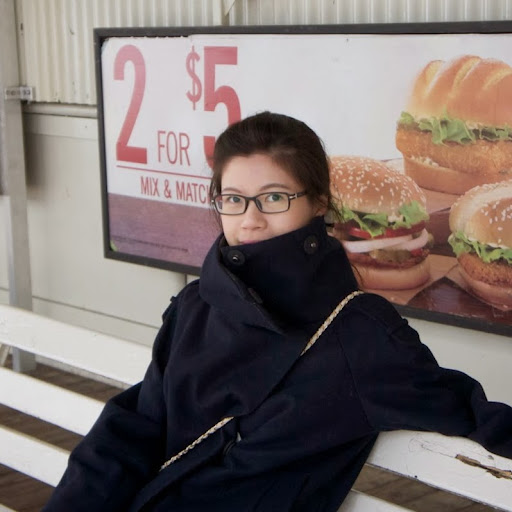Feng Y Chen
age ~50
from San Francisco, CA
- Also known as:
-
- Feng Ying Chen
- Ying Chen Feng
- Ying Hu Feng
- Fengying Chen
- Phone and address:
-
274 Pope St, San Francisco, CA 94112
(415)4695869
Feng Chen Phones & Addresses
- 274 Pope St, San Francisco, CA 94112 • (415)4695869
- 2771 39Th Ave, San Francisco, CA 94116
Isbn (Books And Publications)

The Universality of Physics: A Festschrift in Honor of Deng Feng Wang
view sourceAuthor
Feng Chen
ISBN #
0306467038

Economic Transition and Political Legitimacy in Post-Mao China: Ideology and Reform
view sourceAuthor
Feng Chen
ISBN #
0791426572

Economic Transition and Political Legitimacy in Post-Mao China: Ideology and Reform
view sourceAuthor
Feng Chen
ISBN #
0791426580

Characterization & Therapeutic Assessment of Rodent Stroke With Magnetic Resonance Imaging at a 1.5 Tesla Clinical Scanner
view sourceAuthor
Feng Chen
ISBN #
9058675866
Medicine Doctors

Feng Chen
view sourceSpecialties:
Internal Medicine
Work:
Central Ohio Primary Care Physicians
4845 Knightsbridge Blvd STE 210, Columbus, OH 43214
(614)2730480 (phone), (614)2730517 (fax)
4845 Knightsbridge Blvd STE 210, Columbus, OH 43214
(614)2730480 (phone), (614)2730517 (fax)
Education:
Medical School
Tongji Med Univ, Wuhan City, Hubei, China
Graduated: 1982
Tongji Med Univ, Wuhan City, Hubei, China
Graduated: 1982
Procedures:
Arthrocentesis
Cardiac Stress Test
Continuous EKG
Electrocardiogram (EKG or ECG)
Vaccine Administration
Cardiac Stress Test
Continuous EKG
Electrocardiogram (EKG or ECG)
Vaccine Administration
Conditions:
Chronic Renal Disease
Disorders of Lipoid Metabolism
Fractures, Dislocations, Derangement, and Sprains
Gastritis and Duodenitis
Gout
Disorders of Lipoid Metabolism
Fractures, Dislocations, Derangement, and Sprains
Gastritis and Duodenitis
Gout
Languages:
Chinese
English
English
Description:
Dr. Chen graduated from the Tongji Med Univ, Wuhan City, Hubei, China in 1982. He works in Columbus, OH and specializes in Internal Medicine.
Name / Title
Company / Classification
Phones & Addresses
Managing
Adf Investments, LLC
Trading Advisor · Investor
Trading Advisor · Investor
1521 Budd Ct, San Mateo, CA 94403
FOREST PARK FIRST WOK, INC
NEW GRAND BUFFET OF BOARDMAN INC
GREENLAND PROPERTY MANAGEMENT. LTD
NO. 1 HIBACHI AND GRILL FREMONT INC
CHEN'S KITCHEN 556 INC
Owner
Cabrillo's Cleaners
Garment Press/Cleaner's Agent
Garment Press/Cleaner's Agent
4412 Cabrillo St, San Francisco, CA 94121
(415)8760405
(415)8760405
President
CHEN'S INTERNATIONAL DEVELOPMENT CORPORATION
2055 Pioneer Ct, San Mateo, CA 94403
Us Patents
-
Methods And Compositions For Modulating Angiogenesis
view source -
US Patent:7323439, Jan 29, 2008
-
Filed:Sep 19, 2001
-
Appl. No.:09/960708
-
Inventors:Gerald R. Crabtree - Woodside CA, US
Isabella Graef - Woodside CA, US
Feng Chen - Palo Alto CA, US -
Assignee:The Board of Trustees of the Leland Stanford Junior University - Palo Alto CA
-
International Classification:A61K 31/00
A61K 31/70
C12N 5/00 -
US Classification:514 1, 514 2, 435 6, 435 71, 435377
-
Abstract:Methods and compositions for modulating angiogenesis in a host are provided. In the subject methods, an effective amount of Ca/calcineurin/NF-ATc signaling pathway modulatory agent is administered to the host. In many embodiments, the Ca/calcineurin/NF-ATc signaling pathway modulatory agent is an NF-ATc antagonist, e. g. , in those embodiments of inhibiting angiogenesis. The subject methods find use in a variety of different applications, including the inhibition of tumor growth and the treatment of disease conditions characterized by tumor presence. Also provided are methods of screening for agents that inhibit angiogenesis by modulating the Ca/calcineurin/NF-ATc signaling pathway.
-
Hinged Food Container
view source -
US Patent:D680860, Apr 30, 2013
-
Filed:Jun 13, 2012
-
Appl. No.:29/424621
-
Inventors:Martin Schulter - Greenbrae CA, US
Feng Yi Chen - Burlingame CA, US -
Assignee:Nowpak, Inc. - Burlingame CA
-
International Classification:0903
-
US Classification:D 9426, D9420
-
Hinged Food Container With Compartments
view source -
US Patent:D681446, May 7, 2013
-
Filed:Jun 13, 2012
-
Appl. No.:29/424623
-
Inventors:Martin Schulter - Greenbrae CA, US
Feng Yi Chen - Burlingame CA, US -
Assignee:Nowpak Inc. - Burlingame CA
-
International Classification:0903
-
US Classification:D 9426, D9420, D9761
-
Rectangular Hinged Food Container
view source -
US Patent:D681447, May 7, 2013
-
Filed:Jun 13, 2012
-
Appl. No.:29/424624
-
Inventors:Martin Schulter - Greenbrae CA, US
Feng Yi Chen - Burlingame CA, US -
Assignee:Nowpak Inc. - Burlingame CA
-
International Classification:0903
-
US Classification:D 9426, D9420
-
Method For Making Mate-Pair Libraries
view source -
US Patent:20120329678, Dec 27, 2012
-
Filed:Jun 27, 2012
-
Appl. No.:13/535167
-
Inventors:Feng Chen - Castro Valley CA, US
Ze Peng - Moraga CA, US
Zhiying Zhao - Danville CA, US
Nandita Nath - Fremont CA, US
Jeff L. Froula - Walnut Creek CA, US -
Assignee:THE REGENTS OF THE UNIVERSITY OF CALIFORNIA - Oakland CA
-
International Classification:C40B 50/06
C40B 40/06 -
US Classification:506 16, 506 26
-
Abstract:The present disclosure provides methods for generating mate-pair libraries using a recombinase/recombination site system. The method allows for increased insert size, improved efficiency and simplicity of the steps involved, and improved data generation. Mate-pair libraries are helpful in providing positional information for the assembly of sequence data from short read sequencing platforms. The disclosure also embodies the mate-pair libraries as generated from these methods.
-
Doping Of Metal Barrier Layers
view source -
US Patent:20210351072, Nov 11, 2021
-
Filed:May 6, 2020
-
Appl. No.:16/867990
-
Inventors:- Santa Clara CA, US
Christina L. Engler - Union City CA, US
Gang Shen - San Jose CA, US
Feng Chen - San Jose CA, US
Tae Hong Ha - San Jose CA, US
Xianmin Tang - San Jose CA, US -
Assignee:Applied Materials, Inc. - Santa Clara CA
-
International Classification:H01L 21/768
-
Abstract:Described are methods for doping barrier layers such as tantalum (Ta), tantalum nitride (TaN), tantalum carbide (TaC), niobium (Nb), niobium nitride (NbN), manganese (Mn), manganese nitride (MnN), titanium (Ti), titanium nitride (TiN), molybdenum (Mo), and molybdenum nitride (MoN), and the like. Dopants may include one or more of one or more of ruthenium (Ru), manganese (Mn), niobium (Nb), cobalt (Co), vanadium (V), copper (Cu), aluminum (Al), carbon (C), oxygen (O), silicon (Si), molybdenum (Mo), and the like. The doped barrier layer provides improved adhesion at a thickness of less than about 15 Å.
-
Selective Cobalt Deposition On Copper Surfaces
view source -
US Patent:20210062330, Mar 4, 2021
-
Filed:Aug 25, 2020
-
Appl. No.:17/002296
-
Inventors:- Santa Clara CA, US
Yufei HU - Fremont CA, US
Gang SHEN - San Jose CA, US
Feng CHEN - SAN JOSE CA, US -
International Classification:C23C 16/06
C23C 16/52
C23C 16/455 -
Abstract:A method for capping a copper surface on a substrate. In embodiments, the methods include exposing a substrate including a copper surface and a dielectric surface to a cobalt precursor gas and a process gas including a reducing agent to selectively form a first cobalt capping layer over the copper surface while leaving exposed the dielectric surface during a vapor deposition process, wherein a flow rate ratio of process gas to cobalt precursor gas is at least 300:1.
Resumes

Feng Chen St. Louis, MO
view sourceWork:
American Food Exporters LLC & Resource One
Oct 2012 to Oct 2012 Super 9 Store
St. Louis, MO
Sep 2011 to Aug 2012
Store Manager Assistant A small gift company
Fuzhou, CN
Jun 2008 to Sep 2008
Sales Representative
Oct 2012 to Oct 2012 Super 9 Store
St. Louis, MO
Sep 2011 to Aug 2012
Store Manager Assistant A small gift company
Fuzhou, CN
Jun 2008 to Sep 2008
Sales Representative
Education:
Webster University
St. Louis, MO
Oct 2012
M.B.A University of Fujian Jiaxia
Fuzhou, CN
Jun 2009
Bachelor of Business English
St. Louis, MO
Oct 2012
M.B.A University of Fujian Jiaxia
Fuzhou, CN
Jun 2009
Bachelor of Business English
Real Estate Brokers

Feng Chen
view sourceSpecialties:
Buyer's Agent
Listing Agent
Listing Agent
Plaxo

Feng Chen
view source
Feng Chen
view sourceSeattle, WAPast: Sr.RA at Marina Biotech (formerly Nastech/MDRNA), Contract Research at EndoGastric... An experienced and resourceful problem-solver with a MS degree, a wild-range professional background in life science, education and biotech industry, a proving... An experienced and resourceful problem-solver with a MS degree, a wild-range professional background in life science, education and biotech industry, a proving record of success and a still undiminished can-do spirit.

Feng Chen
view sourceBeijing, ChinaMarket Manager-China North at Qingdao Almatis Co

Feng Chen
view sourceGroup Lead at US DOE JGI

Feng Chen
view sourcegeneral Manager at AcconSys Beijing Ltd.

Feng Wei Chen
view source
Jian Feng Chen
view source
Feng Chen
view source
Feng Chen
view source
Feng Zhen Chen
view source
Feng Chen
view source
Feng Chen
view source
Feng Chen
view sourceYoutube
Classmates

Feng Chen
view sourceSchools:
Berean Christian School Stony Brook NY 2003-2007
Community:
Mark Ferris, Deirdre Bluemer, Robert Corry, Penny Harrington

Feng Chen
view sourceSchools:
East Side High School Covington GA 1997-2001
Community:
Elaine Taylor

Feng Chen
view sourceSchools:
central conn state unversity New Britain CT 1995-1999
Community:
Carol Taylor, Richard Washington, Laverne Hillman, Sam Daniels

Feng Chen
view sourceSchools:
Lower East Side Preparatory New York NY 1999-2003
Community:
Jeffery Hartley, Kevin Warren, Linlin Huang, Rodney Stafford, Maria Lomax

Feng Chen
view sourceSchools:
Christa McAuliffe Intermediate School 187 Brooklyn NY 1999-2003
Community:
Dennis Fisher, Barry Kopman, Lester Solnin, Joseph Pasquarello

Christa McAuliffe Interme...
view sourceGraduates:
Feng Chen (1999-2003),
James Collins (2000-2004),
Thomas Whelan (2000-2004),
Chris Emerson (1980-1984)
James Collins (2000-2004),
Thomas Whelan (2000-2004),
Chris Emerson (1980-1984)

Towson State University -...
view sourceGraduates:
Jeffrey Amdur (1972-1975),
Jenny Seifried (2002-2005),
Lea Stiltner (1997-1999),
Feng Chen (1996-1998),
Willard Longnecker (1974-1978)
Jenny Seifried (2002-2005),
Lea Stiltner (1997-1999),
Feng Chen (1996-1998),
Willard Longnecker (1974-1978)

International School, Man...
view sourceGraduates:
Lisa Jig Feng Chen (1993-1995),
Rainer Schulz (1982-1986),
Philip French (1972-1974),
Brenda McNamee (1976-1978)
Rainer Schulz (1982-1986),
Philip French (1972-1974),
Brenda McNamee (1976-1978)
News

Researchers Uncover Alarming Link Between Plastic Exposure and Autism in Male Offspring
view source- use phenotype by Christos Symeonides, Kristina Vacy, Sarah Thomson, Sam Tanner, Hui Kheng Chua, Shilpi Dixit, Toby Mansell, Martin OHely, Boris Novakovic, Julie B. Herbstman, Shuang Wang, Jia Guo, Jessalynn Chia, Nhi Thao Tran, Sang Eun Hwang, Kara Britt, Feng Chen, Tae Hwan Kim, Christopher A. Reid,
- Date: Aug 16, 2024
- Category: Health
- Source: Google

Major milestone reached in effort to ID cancers' genetic roots
view source- Jayasinghe, Qingsong Gao, Song Cao, Wen-Wei Liang, Steven M. Foltz and others from Ding's lab are primary authors. Within Washington University, Ding has collaborated with a number of investigators, including Feng Chen, Ph.D., an associate professor of medicine and a co-senior author of two of thes
- Date: Apr 05, 2018
- Category: Health
- Source: Google

Why Is Itching So Contagious?
view source- cluding motivation and reward, pleasure, craving and even addiction, as Denise Grady put it in the New York Times. For this reason, "my lab has been studying itching for many years," says Zhou-Feng Chen, director of the Washington University School of Medicine's Center for the Study of Itch.
- Date: Mar 10, 2017
- Category: Health
- Source: Google

Rockchip Launches New Laptop Processor for Google ChromeOS
view source- Rockchip and Google have a very close relationship weve cooperated on tablets and smart phones for years, said Mr. Feng Chen, Chief Marketing Officer of Rockchip. Were used to working with Google on cutting edge projects, like Project ARAs modular smart phones. The RK3288-C has worked out ve
- Date: Mar 31, 2015
- Category: Sci/Tech
- Source: Google

Why Scratching an Itch Makes It Worse
view source- "The difficulty is that when the brain gets those discomfort signals, it responds by making the neurotransmitter serotonin to help handle that pain," co-author Zhou-Feng Chen, director of Washington University's Center for the Study of Itch, stated in a statement. "But as ser
- Date: Nov 01, 2014
- Category: Health
- Source: Google

Why scratching an itch only makes it worse
view source- "Folks hold scratching even though they might end up bleeding," says Zhou-Feng Chen at the Washington University College of Medicine in St Louis, Missouri, who has now worked out why this happens. His team's function in mice suggests it comes down to an unfortunate bit of neural crosstalk.
- Date: Nov 01, 2014
- Category: Health
- Source: Google

Why scratching an itch only makes it worse
view source- "People keep scratching even though they might end up bleeding," says Zhou-Feng Chen at the Washington University School of Medicine in St Louis, Missouri, who has now worked out why this happens. His team's work in mice suggests it comes down to an unfortunate bit of neural crosstalk.
- Date: Oct 31, 2014
- Category: Health
- Source: Google

Scratching an Itch Makes it Worse
view source- Researchers have known for decades that scratching an itch produces a small amount of pain in the skin, said senior investigator Zhou-Feng Chen, PhD, director of Washington University's Center for the Study of Itch.
- Date: Oct 31, 2014
- Category: Health
- Source: Google
Myspace
Flickr
Googleplus

Feng Chen
Education:
Jinan University - Master of enginering, Sun Yat-sen University - Economics, ChangJun Middle School
Tagline:
CF!NO CROSSFIRE!

Feng Chen
Work:
OACS - Tech
Education:
University of Maryland, College Park - Aerospace Engineering

Feng Chen
Work:
Isola - Lotus Notes Programmer (2011)
About:
Lotus Notes Programmer.

Feng Chen
Work:
Jabil Circuit

Feng Chen
Education:
Kyoto University - Department of Intelligence Science and Technology

Feng Chen
Work:
Aon Corp.

Feng Chen

Feng Chen
Tagline:
A civil engineer in Tokyo
Get Report for Feng Y Chen from San Francisco, CA, age ~50















